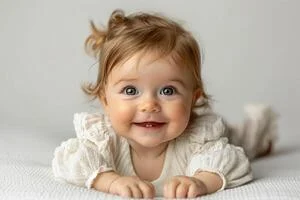Your cart is currently empty!
How My 3-Year-Old Daughter Showed Me the Joy of Embracing Pretty
When my daughter, Mia, hit two and a half, she became quite vocal about her desire to be “pretty.” This often came out as a passionate declaration: “I HAVE to be pretty!” which was her way of justifying the pink dresses she insisted on wearing instead of pants. My initial reaction was to push back, reminding her how impractical a dress could be for climbing at the playground. But Mia would respond, “I don’t want to climb. I have to be PRETTY!”
At first, I thought this obsession with being pretty was influenced by well-meaning strangers who complimented her pink dresses. I felt frustrated, believing they were teaching her to prioritize looks over everything else and setting her up for a lifetime of unsolicited comments about her appearance. However, as her fixation on prettiness grew, I realized it wasn’t just brainwashing; it was an essential part of her identity and a way she expressed her femininity.
I began to see that my role as a mom wasn’t about steering her away from the sea of pink that surrounds young girls. Instead, it was about supporting her love for all things girly while also encouraging critical thinking about the problematic aspects of gendered marketing toward kids. This was a big eye-opener for me, forcing me to confront my own biases about femininity.
Growing up in a small town in the ’90s, I was surrounded by a culture where tomboys were celebrated and girly girls were often dismissed. I secretly envied the girls who embraced pink and played with dolls, but I’d join in with others in making fun of them. I was taught that femininity was something to be ashamed of. Even today, many girls learn that wearing makeup or fashionable clothes can lead to being taken less seriously.
I thought I had come to terms with these societal pressures—until I found myself hiding Mia’s tutu because I felt uncomfortable with the attention it attracted. That’s when I realized I needed to reevaluate my stance. The tutu wasn’t the issue; the problem lay in society’s narrow definition of what it means to be pretty. It shouldn’t be about conforming to an unrealistic standard or feeling pressured to fit into a mold.
Mia’s definition of pretty is so much more innocent and joyous. To her, being pretty is about fun and creativity—dresses, sparkly accessories, and vibrant colors. When she tells me I’m not pretty today, she’s simply suggesting I wear something brighter. Her perspective is refreshing; she believes everyone is pretty in her magical world, Alicia-land. While she may not fully grasp the complexities of beauty standards yet, I hope to help her navigate these challenges as she grows.
As we move forward, I want to hold onto the lesson she’s taught me: that pretty is an expression of self, not a measure of worth. There’s nothing trivial about wanting to embrace beauty and creativity. And no, the tutu is never the issue.
For more on navigating pregnancy and home insemination, check out this excellent resource on intrauterine insemination. You can also read more about at-home options through this guide.
In summary, my daughter’s innocent view on being pretty has prompted a deep reflection on how we perceive beauty. It has encouraged me to let go of my worries and embrace the joy of self-expression.
